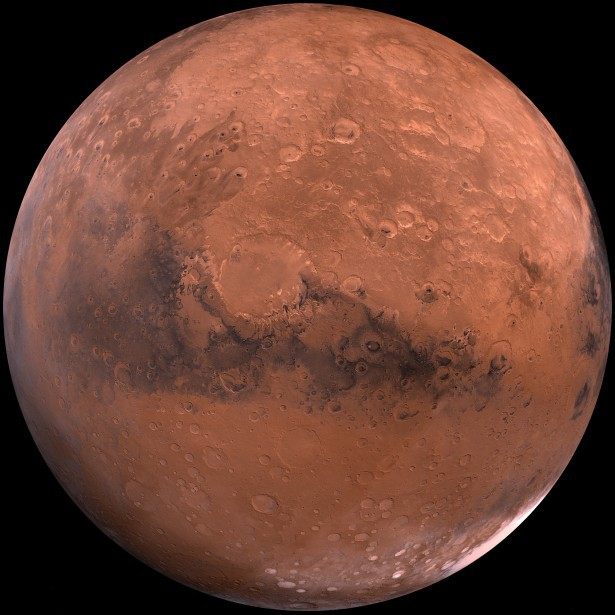Yale researchers discover potential key for space travel on Mars and Titan
The ability to predict the weather on planets, such as Mars, and on Saturn’s moon Titan could help ensure the safety of space missions, both manned and unmanned.

Creative Commons
A recent Yale study conducted by two members of the Department of Earth and Planetary Sciences could have crucial implications for the future of space travel.
The study, authored by postdoctoral associate J. Michael Battalio and Juan Lora, assistant professor of earth and planetary sciences, focuses on the use of annular modes — variabilities in the climate that are disparate from the seasonal cycle — on other planets to predict weather. Their research provides evidence that these annular modes could play a role in the weather patterns of planets.
Battalio’s inspiration for this study stemmed from his previous research studying Martian dust storms. He realized that the dust storms had a cyclical nature that was not consistent with the shorter periodicity of the atmospheric waves that caused the storms.
“I didn’t know when I discovered this periodicity what was going on, but I remembered some of my previous reading of literature for Earth that annular modes on Earth had a periodicity of about 20 days, and they’re connected to these waves that had this other periodicity,” Battalio said. “I figured if Mars has waves like Earth and this climate feature, these annular modes … then it makes sense to look for these modes on Mars and see if their periodicity can explain the dust storms.”
Battalio joined Lora’s research group at Yale in 2019, and they had plans to research the existence of annular modes on other planets. In addition to Mars, the pair also observed a similar phenomenon on Titan, Saturn’s largest moon, using the Titan Atmospheric Model, a simulation of the moon’s climate that Lora developed during his doctoral dissertation.
To their surprise, Battalio and Lora discovered that the impact of annular modes is even greater on Mars and Titan than on Earth.
“We’re trying to understand whether these types of structures of variability occur in other terrestrial planetary atmospheres, and we have the tools to do that on Mars for the first time,” Lora said. “The idea is to try to see if there’s some sort of regular variability in the atmospheres of these two places, which then if it’s there, we can characterize and understand it. Maybe that paves the way for weather predictions down the line, and that’s where the implications and future work are.”
In 2018, NASA’s solar-powered Opportunity rover, which had been collecting data on Mars’ surface for over a decade, ceased functioning as a result of a planet-wide dust storm.
Using annular modes to monitor the planet’s climate could allow scientists to better predict the arrival of such weather events on Mars and prevent similar destruction on future missions.
“People on the surface are going to have to rely on solar-generated electricity,” Battalio said. “If we cannot warn people, if we cannot forecast these dust events reliably the way we do for Earth, if one of these dust events sneaks up on them and they don’t have enough energy stored in battery backups, it could make life very difficult for people on the surface.”
Pedram Hassanzadeh, an assistant professor in Rice University’s Department of Mechanical Engineering and Department of Earth, Environmental and Planetary Sciences, described having accurate weather forecasting in places like Mars as “a matter of life and death.”
He believes that annular modes could play a valuable part in addressing this issue, especially since the infrastructure for predicting weather on Earth does not exist on Mars.
“We are probably not going to have this infrastructure on Mars if we want to go there and stay there, so I think building a statistical model using machine learning can be an interesting step in something that even a small computer, small laptop or even an iPad could do the computation to give you some rough estimate,” Hassanzadeh said. “For that kind of work, using annular modes, that is perhaps our best shot.”
Istvan Szunyogh, professor of atmospheric sciences at Texas A&M University, emphasized the importance of Lora and Battalio’s discovery.
He explained how the paper suggests that these annular modes are likely a common feature for planets similar to Earth, which is a significant advancement in understanding for the field.
“It’s not trivial that these modes exist because some of the changes, like changes in the seasons for example, are expected because they really depend on the amount of energy that comes from the sun, but as [Lora and Battalio] are describing in the paper, these are internal variabilities,” Szunyogh said.
Battalio and Lora hope to expand their research to other planets, such as Venus and Jupiter.







